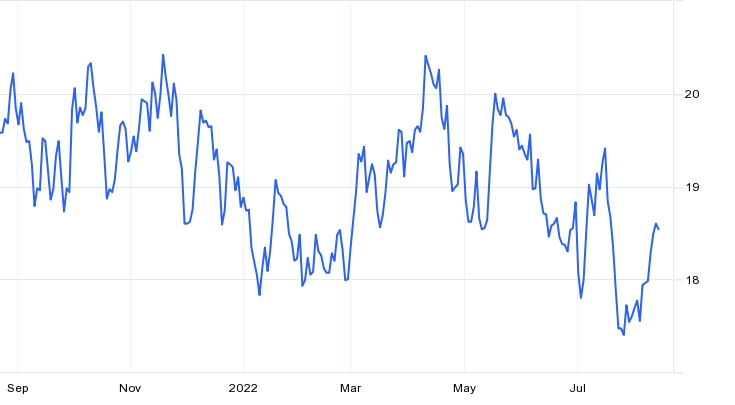Lower Sugar Crushing Estimates in Brazil Pushes Up Sugar Futures Yet Again

The Center South (CS) region of Brazil is the largest sugar producing region in the country, occupying over 90% of Brazil’s total sugar production. In the last two years, the CS region witnessed a prolonged period of below-average rainfall in 2020 and January-September 2021, coupled with severe and sudden frosts in late June and July 2021. This severely impacted the health and productivity of the sugarcane crop. According to Reuters, the CS region will produce 555 million mt of sugarcane in marketing year (MY) 2022–23, a YoY increase of only 5% over the previous period. This is a very low recovery in production as the sugarcane fields continue to be impacted by the aftermath of these adverse weather conditions.
It was also projected that the CS region’s sugar production will stand at 32.2 million mt in MY 2022–23 versus 32 million mt in the previous season. Despite a bigger sugarcane crop, sugar production volumes remain more or less the same, given that a large part of the cane will be used to make ethanol. Reuters estimated that the mills are likely to allocate 43.5% of sugarcane production to sugar, compared to the 45.2% during last MY. The demand for ethanol is being driven by key stringent regulations to promote ethanol usage as biofuel in the automotive industry, surging beverage production, and increased use of hand sanitizer and disinfectants across the world.
Sugar Futures on ICE

Source: Trading Economics.
The sugar futures on the Intercontinental Exchange, a benchmark contract for raw sugar trading, reflect the production dynamics of Brazil through changes in contract prices. Sugar futures are hovering around 18.5 cents per pound, which is a three-week high due to poor weather conditions and lower estimates for sugar crushing. This comes after a sudden dip in W1 of August when sugar futures plummeted to their lowest in one year after Brazilian state-owned Petrobras cut gasoline prices twice in the span of three weeks. Furthermore, it is likely that the Brazilian government will postpone its compliance with renewable fuel targets, which will further push up the demand for ethanol and increase the price of the biofuel. Higher prices will make ethanol blending less profitable, swinging the allocation of sugarcane for producers to crush sugar instead. Given these factors, sugar futures might decrease to their usual levels in the near future.





